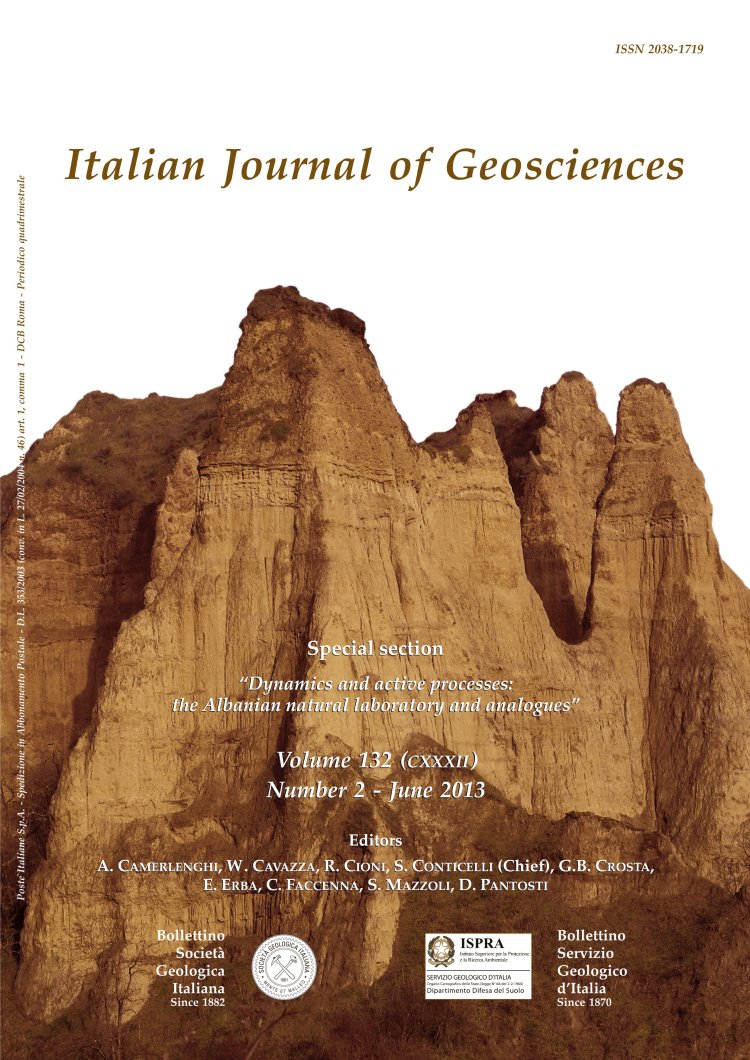
Hydrocarbon evaluation aspects in Neogene clastic reservoirs, Vlora-Elbasan Region, Albania
Vilson Silo(*), Kristaq Muska(*) & Erald Silo(*)
(*) Polytechnic University of Tirana. Faculty of Geology andMines. Rruga e Elbasanit. Tiranë. Albania. E-mail: vilsonsilo@yahoo.com; kristaqmuska@yahoo.fr; erald_silo@yahoo.com
DOI: https://doi.org/10.3301/IJG.2013.04
Volume: 132 (2013) f.2
Pages: 220-227
Abstract
The Neogene clastic deposits contain more than half of the reserves discovered in the Albanian territory, from which more than 25÷30% are still undeveloped. This paper describes the spatial distribution and the reservoir characteristics of these molasse deposits in relation with the regional geological and structural evolution. These reservoirs constitute transgressive sequences deposited on the top of underlying Mesozoic and Paleogene limestones above a major erosional surface. The paleorelief, mainly shelf, controlling the distribution of the molasse, is made up of terraces and paleo-valleys, which developed by erosion of the continental margin of the Ionian plate during episodes of thrust-related tectonic uplift. The links between tectonics, erosion and sedimentation have controlled both
the distribution of the main molasse depocenters, and the coeval depositional environments. The molasse deposits were initially devoided of organic matter precluding any in situ generation of hydrocarbons. As a consequence, the oil currently found in the Neogene reservoirs results from a secondary migration from underlying limestone reservoirs at places where the intervening Oligocene flysch has been entirely removed by erosion. The reservoir characteristics
of the Neogene clastics are mainly related to lateral and vertical lithological changes controlled by the paleo-environments and tectonics. From the regional viewpoint, the deposits relate to the presence of bays and tectonics uplifts, with erosion, transport and sedimentation processes operating both at regional and local scales.
The oil accumulations are concentrated in dominantly stratigraphic traps within the bays and outside them, as a result of lithological changes that made possible their preservation. The main migration pathways are located along the transgressive contacts in Patos-Verbas, Kuçove and Selenica fields. In general, sandstone thickness increases from south to north and from east to west. The reserve estimates made until now for the hydrocarbon potential of the Neogene molasse deposits, have been based using the former Eastern European classification, but they lack a modern economical evaluation. Often, the analogy with other, better known and more mature Petroleum provinces has been used. When re-evaluating the hydrocarbon potential of Albania the reserve estimates of the Neogene clastic deposits have been determined in accordance with the requirements of the western classification into proven, probable and possible reserves with increasing reliability. Attention has been paid also to account for lateral and vertical shifts of the water-oil contacts operating during the deformation of the reservoirs due to regional tilting, folding and/or thrusting.
Keywords
Get Full Text